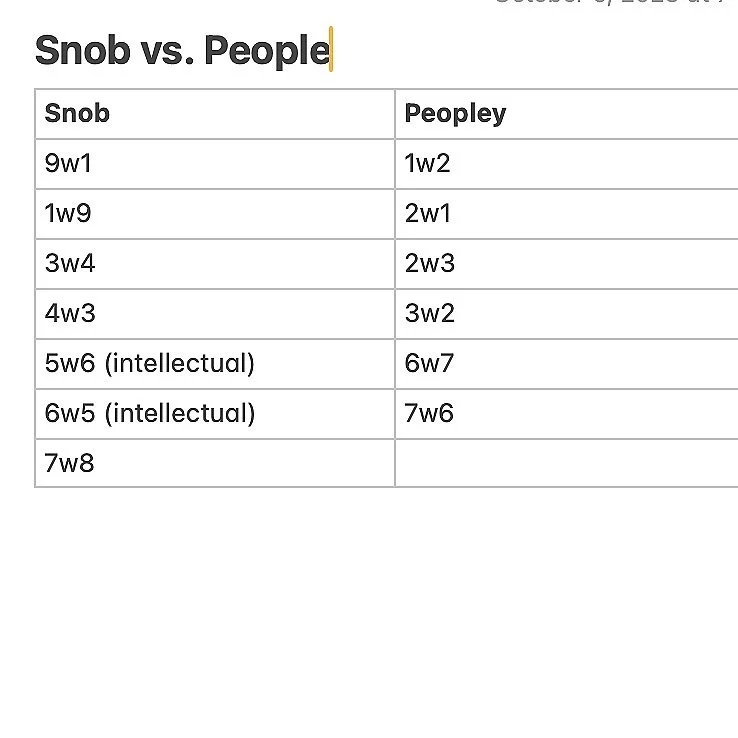notes that accompany our SO Instinct Zones
Read Morenotes that accompany our SO Instinct Zones video
Read Morenotes that accompany our SX Instinct Zones video
Read MoreIn David’s theory of the instincts, each instinct has three zones. These zones run in a cycle, but they also get “stuck” the way our instinct stacking does.
Read MoreThe discussion about what these triads really are left us with some insights that we wanted to share.
Read MoreThe overlaps of so/sp and Type 1, and so/sx with Type 7 — the two “social-dominant”enneagram types —indicates that they consider themselves to have innate social ascendance
Read MoreOne of the tri-patterns we’ve noticed (introduced by David) is that fixes can either be Snobby, Peopley, or Neutral.
Read MoreIntroduction video to Overlay
Read MoreI just wanted to give a quick description of two terms we’ve been using: “areas” and “adjacents.”
Read MoreHere is a list of some of the original terms and concepts created by Enneagrammer.
Read MoreRead MoreI think there is some vagueness with the term "attachment" in object relations which leads to confusion about how it plays out, because technically, "frustration" types are attached to frustration and "rejection" types are attached to rejection.
As an addendum to my post on Trifix Overlay theory, I wanted to write a list of my favourite trifix nicknames. Some of these are from BHE’s trifix roast, some of them I’ve created, and some are derived from Katherine Fauvre’s original Tritype work.
Read MoreWhat is Trifix overlay? Essentially this is just a synergistic way of looking at the fixes on each wing. Up to now, in terms of trifix synergy, we didn’t look at wings together.
Read MoreDetermining your full Trifix can often take years of study and introspection. However, once you do, the richness of information revealed is revelatory. Enneagrammer coach, Emeka Okorafor, put together a cheat sheet as a starting point to considering what your trifix might be.
Read More6 is the most confusing type because of its pendulous nature. Here is an summary of how it appears within a tritype with each gut fix.
Read MoreType 6 is notoriously difficult for people to catch as an energy in themselves. The main reason is because the structure of the type is built around contradictions, or opposite poles. If one is only ego-conscious of one side of this pole, they might conceptualize their type based on that one extreme.
Read MoreThe problem that 9s have in typing themselves is itself a confusion generator for the collective -- 9s are incidentally redefining certain enneagram types (to fit themselves), but are completely unaware (unseeing) that they're doing this.
Read MoreThere is a lot of mistyping at 4 in the enneagram community, mostly due to misinterpretation of texts. This large-scale mistyping has even caused a feedback loop where the texts about 4 are describing mistyped people. Here are some of the most common misconceptions about type 4
Read MoreIt's often said that it's the motivation, not the behavior, that gives a view into someone's type, but motivations are mainly unconscious.
Read MoreThe process of discovering your type is usually jarring and requires someone to help you break through those ego boundaries. We don’t WANT to break those boundaries because we feel they’re there for a reason.
Read More













